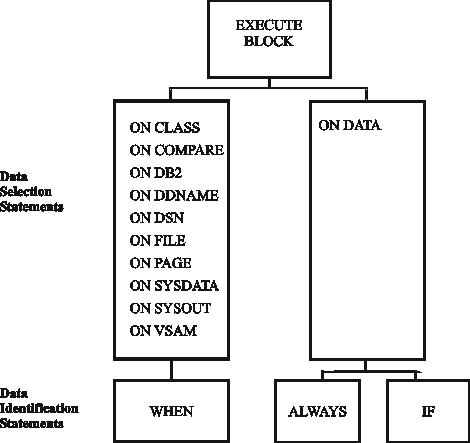Data Selection statements specify the data source to be balanced by Control-M/Analyzer. These statements also specify conditional criteria and branching instructions that control which EXECUTE blocks within a rule are processed.
Table 214 Data Selection Statements
Statement |
Description |
|---|---|
EXECUTE Statement |
Provides a name for the EXECUTE block and determines whether the block is executed based on conditional UPON criteria. |
ON Statement |
Specifies the source of data that the rule attempts to balance. |
ON CLASS |
Job outputs of a specified class. |
ON COMPARE |
Datasets that are input for the reconciliation process. |
ON DB2 |
Data from DB2 tables. |
ON DDNAME |
Datasets referenced by a DD statement in the current step. |
ON DSN |
For Control-D and Control-V users only: Compressed Dataset Access Method (CDAM) files. |
ON FILE |
Sequential or partitioned dataset. |
ON PAGE |
For Control-D and Control-V users only: Pages passed to Control-M/Analyzer when report output is decollated. |
ON SYSDATA |
For Control-M and Control-M/Restart users only: The three job sysout datasets, referred to as SYSDATA,a passed to Control-M/Analyzer from Control-M when Control-M analyzes a job run. |
ON SYSOUT |
Outputs referenced by PGMNAME/PROCNAME parameters on a specified DD name statement. |
ON VSAM |
VSAM file records. Identified by user-specified keys. |
ON DATA |
Control-M/Analyzer variables. |
An EXECUTE block is comprised of one Data Selection statement (ON block), one or more Data Identification statements (WHEN, ALWAYS, or IF), and a series of DO statements for each Data Identification statement.
Different Data Identification statements (WHEN, ALWAYS, and IF) are displayed based on which ON statement is used.
Figure 175 Structure of an EXECUTE Block

Parent Topic |